In an era where music is often shaped by algorithms and trends, The Weather Station stands out as a beacon of authenticity and introspection. Led by the multi-talented Tamara Lindeman, this Toronto-based project defies easy categorization, weaving together elements of folk, indie rock, and jazz-inflected experimentation into a sound that is as ethereal as it is emotionally grounded. With lyrics that read like poetry and compositions that feel both lush and intimate, The Weather Station creates music that invites listeners to not just hear, but feel the intricacies of the human condition.
What sets The Weather Station apart is Lindeman’s ability to turn personal reflections into universal truths, crafting songs that explore the delicate balance between vulnerability and resilience. Whether addressing climate anxiety, love, or identity, Lindeman’s songwriting feels deeply attuned to the complexities of the world around her. The band has garnered critical acclaim for its ability to marry profound lyricism with innovative soundscapes, creating a sonic experience that feels both timeless and timely.
Background
Early Life
Tamara Lindeman, the creative force behind The Weather Station, was born and raised in Toronto, Canada. Growing up, Lindeman wasn’t the typical child prodigy destined for the music stage. In fact, she initially had no plans of becoming a musician. Instead, her early life was marked by a deep love for storytelling, poetry, and the arts. Lindeman worked as an actress in her youth, appearing in films and TV shows, but it was this sense of narrative and emotional depth that would later seep into her songwriting. Her introduction to music came more from a desire to express her introspective nature and observations of the world around her rather than a formal musical upbringing.
This quiet yet profound connection to the arts helped shape the nuanced lyricism and storytelling that would become hallmarks of her later work with The Weather Station. Her experiences growing up in Canada, surrounded by nature and diverse urban life, also heavily influenced her music’s emotional landscapes, grounding her poetic musings in tangible reality.
Musical Beginnings
Lindeman’s entrance into music was untraditional. She picked up the guitar almost as a side project, experimenting with songwriting as a way to articulate thoughts and feelings she found difficult to express otherwise. Her initial forays into creating music were solitary and raw—her early recordings were intimate, lo-fi collections that showcased her ability to combine poetic musings with stripped-back acoustic arrangements.
It wasn’t long before Lindeman realized that music, rather than acting, would become her primary artistic medium. She released her first album, East, in 2008 under her own name, and in the following years, The Weather Station moniker was born, serving as a vehicle for her evolving musical vision. The early stages of her career were characterized by DIY ethics, with self-released EPs and performances in small venues where she honed her sound and voice.
Artistic Influences
Lindeman’s sound draws from an eclectic mix of genres and artists, making The Weather Station a unique entity within the folk and indie realms. She cites the early works of Joni Mitchell as a major influence, particularly Mitchell’s lyrical depth and her ability to craft songs that felt deeply personal yet universally resonant. You can hear echoes of Mitchell’s storytelling prowess in Lindeman’s songs, which often explore complex emotions and relationships.
In addition to folk influences, The Weather Station’s music bears traces of jazz and indie rock, pulling inspiration from the likes of Neil Young, Bob Dylan, and Leonard Cohen, as well as more experimental artists like Talk Talk and Nick Drake. The Canadian folk tradition, with its deep connection to nature and introspection, is also embedded in Lindeman’s sound, while her more recent work flirts with bold sonic experimentation, drawing on everything from atmospheric rock to intricate jazz compositions.
Album Overview
The Line (2008)
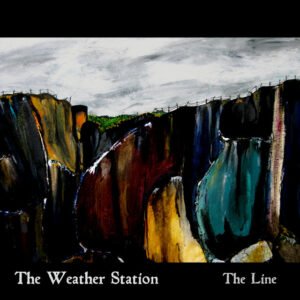
The Weather Station’s debut album, The Line, released under Tamara Lindeman’s own name, is a lo-fi collection of sparse, intimate folk songs. Though relatively understated in terms of production, The Line is a raw, unpolished glimpse into Lindeman’s early songwriting. The album feels like a quiet conversation, full of tender, introspective lyrics that offer a window into the artist’s reflective nature. With simple acoustic arrangements, The Line captures the essence of Lindeman’s first steps as a songwriter—unadorned but brimming with potential.
All of It Was Mine (2011)
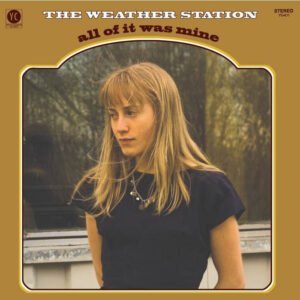
With All of It Was Mine, The Weather Station’s official debut, Lindeman started refining her folk sound, teaming up with Daniel Romano (of Daniel Romano’s Outfit) for a more fleshed-out yet still minimalistic album. The songs maintain a rustic, homespun feel, with gentle guitar picking and Lindeman’s soft vocals front and center. Themes of domesticity, nature, and personal reflection run through the album, with Lindeman’s knack for painting vivid scenes through her lyrics becoming more evident. Tracks like “Came So Easy” and “Everything I Saw” highlight her poetic storytelling, offering meditations on everyday life infused with subtle emotional depth.
What Am I Going to Do with Everything I Know (2014)
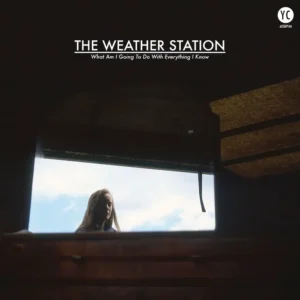
This six-song EP marks a turning point for Lindeman as a songwriter, showcasing a more refined lyrical approach and a willingness to explore complex emotional terrain. While still rooted in the folk tradition, What Am I Going to Do with Everything I Know introduces a more expansive sound, featuring richer arrangements and a sense of openness that points toward the musical evolution to come. The EP captures the tension between knowing and unknowing, certainty and doubt—a theme Lindeman explores with great care and nuance.
Loyalty (2015)
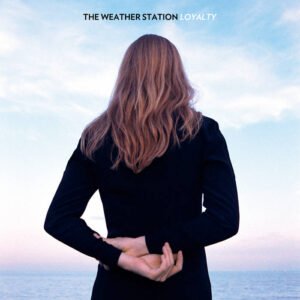
Loyalty was a breakout moment for The Weather Station, both critically and artistically. Produced by Robbie Lackritz (Feist, Bahamas) and recorded in France, the album showcases Lindeman’s growth as a songwriter and a musician. The arrangements are more intricate, featuring strings, piano, and subtle percussion, yet the songs still feel grounded in folk. Loyalty delves deeper into themes of uncertainty, human connection, and identity, with songs like “Way It Is, Way It Could Be” and “Shy Women” standing out for their emotional complexity. Lindeman’s voice—both literally and figuratively—becomes more assured here, balancing vulnerability with quiet strength.
The Weather Station (2017)

The Weather Station’s self-titled fourth album marked a significant shift toward a bolder, more expansive sound. Moving away from the acoustic-centric folk of her earlier records, Lindeman embraced a fuller band arrangement with electric guitars, drums, and a looser, more spontaneous production style. The result is an album that brims with urgency and emotional intensity. Songs like “Thirty” and “You and I (On the Other Side of the World)” are lyrically dense and layered with complex instrumentation, showcasing Lindeman’s ability to fuse intricate storytelling with dynamic, flowing soundscapes. The Weather Station is a deeply personal album that explores themes of identity, womanhood, and the instability of modern life, marking Lindeman’s evolution as a musician willing to push boundaries.
Ignorance (2021)
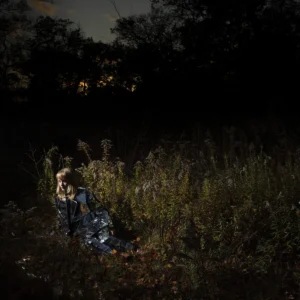
Ignorance represents a bold departure from Lindeman’s earlier folk-driven sound, diving into art-pop and jazz-inflected territory. With lush, sweeping arrangements, Ignorance incorporates synths, strings, and intricate rhythms, creating an expansive, atmospheric sonic palette. Thematically, the album grapples with the enormity of climate change and the personal, existential crisis it evokes. Tracks like “Robber” and “Tried to Tell You” exemplify this shift, blending urgent, socially conscious lyricism with compelling grooves and haunting melodies. Lindeman’s voice is more confident and evocative than ever, guiding the listener through a world fraught with tension and beauty. Ignorance received widespread critical acclaim, cementing The Weather Station’s place as one of the most innovative and thought-provoking acts in modern indie music.
How Is It That I Should Look at the Stars (2022)
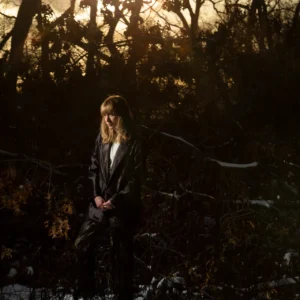
Released as a companion album to Ignorance, How Is It That I Should Look at the Stars strips back the art-pop complexity in favor of a more intimate, piano-driven approach. Recorded over just a few days, the album feels more meditative and fragile, with Lindeman’s voice and piano taking center stage.
It reflects on similar themes of environmental and emotional fragility, but in a more introspective manner. Tracks like “Endless Time” and “Ignorance” highlight the delicate tension between the beauty and sadness of our world, showing another side of Lindeman’s artistry. If Ignorance is bold and expansive, How Is It That I Should Look at the Stars is its quiet, contemplative counterpart, adding depth to The Weather Station’s already richly layered catalog.
Industry Perspective
Challenges and Triumphs
The journey of The Weather Station, much like that of many independent artists, has been marked by both hurdles and victories. Tamara Lindeman’s career initially unfolded in the quieter corners of the music world, with early releases flying under the radar of mainstream attention. As a self-taught musician who didn’t follow a traditional path into the industry, Lindeman faced the challenge of defining her place in a male-dominated folk scene while honing her skills and voice as an artist. Her early work, while critically praised in niche circles, lacked the widespread exposure needed to break through the competitive indie landscape.
One of the most significant hurdles Lindeman has faced is navigating the transition from an acoustic folk sound to the more expansive, genre-blending styles that came later in her discography. Moving into art-pop with Ignorance could have alienated her existing fan base, but instead, it became a moment of artistic triumph. While shifting gears, she stayed true to her lyrical identity, seamlessly evolving her sound while keeping the emotional core of her music intact. This gamble ultimately paid off, as Ignorance opened new doors for her career, bringing her more recognition and a broader audience.
Another triumph in her journey is Lindeman’s ability to speak to deeply personal and socially resonant issues without compromising artistic integrity. Albums like Ignorance delve into complex, often uncomfortable topics like climate change and existential anxiety, themes that aren’t always commercially safe. Yet, her decision to confront these topics head-on shows her commitment to using music as a platform for reflection and dialogue, even when that means stepping outside the boundaries of what might be expected from an indie-folk artist.
Collaborations and Connections
Throughout her career, Lindeman has formed valuable relationships within Canada’s vibrant music scene. Her collaborations with Daniel Romano on early albums like All of It Was Mine were pivotal in shaping The Weather Station’s sound. Romano, an established artist in his own right, helped Lindeman find a balance between folk traditionalism and modern storytelling, with his production adding depth to her minimalist approach. This partnership was crucial in her early growth as a recording artist, allowing her to translate her intimate acoustic performances into something more polished.
In addition to working with Romano, Lindeman has collaborated with several notable musicians in the Canadian indie scene, including members of acts like Bahamas and Feist. These collaborations helped her music gain a foothold in a wider community, introducing her to audiences who appreciated the artful simplicity of her early work.
Her connection to the broader folk and indie communities also runs deep. Lindeman has played with artists like Bruce Cockburn and The National, and her place within these circles has allowed her to draw inspiration from various genres and movements. Her collaborations, however, are not just musical; they also extend to political and environmental activism. Lindeman is outspoken about climate issues, and her connections to activists and environmentally conscious artists have infused her later work, particularly on Ignorance, with a sense of urgency and responsibility.
Recognition and Achievements
Over the years, The Weather Station has garnered increasing critical acclaim, particularly with the release of Loyalty and The Weather Station. These albums marked Lindeman’s emergence as a distinctive voice in the indie folk scene, with critics praising her for her evocative songwriting and nuanced lyricism. Loyalty received rave reviews in outlets like Pitchfork, The Guardian, and Uncut, solidifying Lindeman as a songwriter capable of blending deeply personal narratives with universal themes.
However, it was with Ignorance that Lindeman reached a new level of recognition. The album, released in 2021, was a critical and commercial breakthrough, earning spots on numerous year-end best album lists from publications like Pitchfork, NPR, and The New York Times. Ignorance was also shortlisted for Canada’s prestigious Polaris Music Prize, an honor that recognizes the best album in Canada each year, regardless of genre or sales.
In addition to this, Lindeman’s work has earned nominations for the Juno Awards, Canada’s highest music honor, further establishing her as a vital voice in the country’s music landscape. Beyond awards, her triumphs are also seen in the growth of her fanbase and the respect she has earned from peers and critics alike for her willingness to evolve her sound while staying grounded in meaningful, reflective songwriting.
Impact and Legacy
Cultural Significance
The Weather Station’s impact on modern indie music, and more broadly, on the folk genre, is rooted in Tamara Lindeman’s ability to create deeply introspective and emotionally resonant music that transcends traditional boundaries. By blending folk’s intimate storytelling with experimental production and socially conscious lyricism, Lindeman has expanded the scope of what modern folk music can represent. Albums like Loyalty and Ignorance have redefined the genre, introducing new ways to address personal and global crises through music. Lindeman’s work has been described as a voice for the times, confronting the uncertainties of modern life—whether it’s the alienation of contemporary relationships or the looming threat of climate change.
In a time where artists are expected to be both creators and activists, Lindeman has used her platform not just to make art but to engage in meaningful dialogue around environmental issues. Ignorance, in particular, has been lauded for bringing ecological grief and climate anxiety to the forefront of her music without being preachy, offering a rare space for emotional processing in an era of ecological crisis. In doing so, Lindeman has carved out a space where art and activism intersect, proving that music can still be a powerful tool for social reflection.
Her approach to genre is equally groundbreaking, as she refuses to be pigeonholed into any one category. Drawing from folk, jazz, art-pop, and indie rock, Lindeman has made it clear that the boundaries between genres are meant to be fluid. Her unique blend of acoustic warmth and complex, layered production has influenced a new generation of songwriters who are unafraid to mix introspective lyricism with sonic experimentation.
Fanbase and Community
The Weather Station has cultivated a devoted fanbase that spans across genres and generations. Lindeman’s relationship with her audience is built on a foundation of authenticity and vulnerability. Fans are drawn to her music for its raw emotional depth and the honesty with which she approaches life’s complexities. Whether performing in intimate venues or at larger festivals, Lindeman has an uncanny ability to make each listener feel like they are being spoken to directly, forging a deep emotional connection with her audience.
This sense of intimacy has also fostered a tight-knit community around her music, with fans often discussing her work in terms of its emotional and intellectual impact. The Weather Station’s live performances have further strengthened this bond, as Lindeman’s stage presence reflects the same quiet, introspective energy that characterizes her recordings. In these settings, fans find a shared space to reflect on the world through the lens of her poignant lyrics and captivating performances.
Social media and streaming platforms have also expanded her reach, allowing The Weather Station to build a global following. Her environmentally conscious stance and openness about her own vulnerabilities have resonated with listeners who see her not just as a musician but as a figure of quiet resistance in an often chaotic world. This has helped her establish a community of fans who appreciate the intricate, meditative spaces she creates in her music, which speak to both personal and collective experiences.
Looking Forward
Looking ahead, The Weather Station’s potential legacy feels poised to extend far beyond their current accomplishments. With each album, Lindeman has shown a capacity for artistic evolution that suggests she will continue to push the boundaries of her sound and lyrical themes. Her recent foray into more expansive, art-pop territory with Ignorance hints at even more ambitious projects to come. As environmental and social issues grow more pressing, Lindeman’s voice will likely remain relevant and influential, as she continues to navigate the intersection of art, activism, and personal reflection.
In terms of legacy, Lindeman is already regarded as one of Canada’s most important contemporary songwriters, and her influence will likely deepen as more artists look to her work as a blueprint for blending introspective songwriting with broader socio-political themes. In the coming years, she may well be seen as one of the defining voices of the early 21st century—a musician who not only chronicled the anxieties of her time but also offered a pathway for emotional and collective resilience.
As her discography continues to grow, so too will her influence on both the folk tradition and the wider indie music scene. The Weather Station’s willingness to evolve, challenge norms, and confront uncomfortable truths ensures that Tamara Lindeman’s impact will resonate long into the future, both musically and culturally. She is not just a musician for the present moment, but an artist whose work will likely endure as a reflection of this complex, uncertain era.
Closing Thoughts
The Weather Station, led by the incomparable Tamara Lindeman, is an artist deserving of far more attention in today’s musical landscape. In a world saturated with surface-level content, Lindeman’s work stands as a testament to the power of introspection, honesty, and emotional complexity. Her ability to fuse deeply personal storytelling with socially relevant themes, all while experimenting with genre and sound, has positioned her as one of the most thought-provoking and innovative voices in modern music. From her humble beginnings in Toronto’s folk scene to the expansive sonic realms of Ignorance, Lindeman’s journey is one of artistic bravery, persistence, and profound relevance.
For those seeking music that challenges, comforts, and makes you think deeply, The Weather Station offers an immersive listening experience unlike any other. Her albums provide a space for reflection on both personal and global crises, blending poetic lyricism with an ever-evolving sound that defies easy categorization. Whether you are drawn to the introspective folk of Loyalty or the more expansive art-pop of Ignorance, there is something in Lindeman’s discography that will resonate with your inner world.
